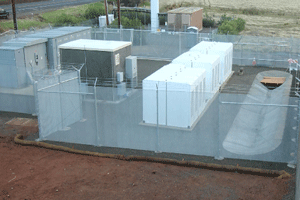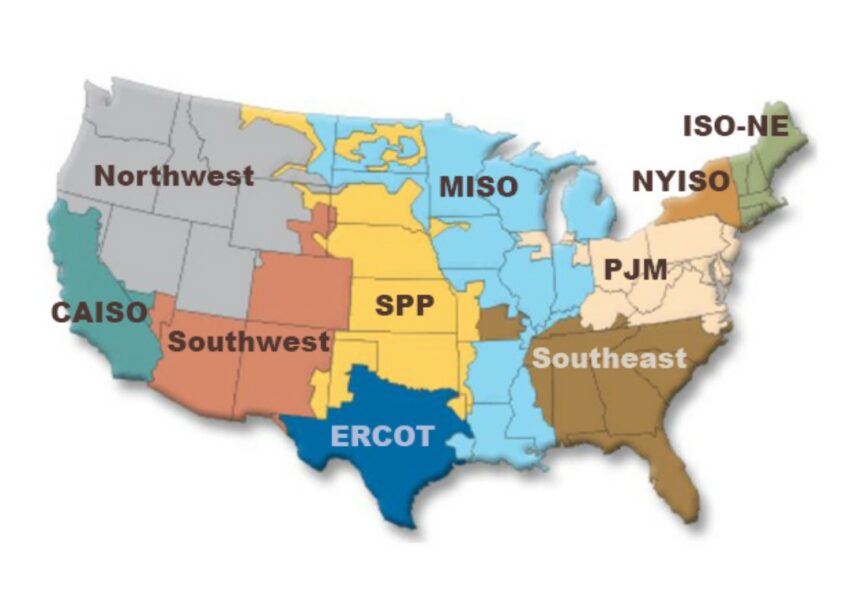Electrical power is a multi-billion-dollar industry where traditionally only a small group of select participants get to play. Only about ten wholesale markets across the United States account for its most important energy asset, with nearly 100 front running firms doing all the business.
Aside from owning common shares of a publicly traded company, the average citizen has never been able to capture a true share in this market. The same players have been controlling energy for decades and allowing monopolies to form while infrastructure suffers and customer prices rise.
The Challenge of Stored Electrical Power
Electrical energy is an asset, and one that a majority today still can’t be stored across the grids; it travels directly from generator, to the transmission lines, and to the end user. The US power grid is broken down into three main regions: the western interconnection, the eastern interconnection, and the Texas interconnection.
Unknowingly to most consumers, there is another entity in between all of this: the reseller of energy (or middle man) to homes and businesses. This is where the energy markets come into play, which facilitates the trading of electrical energy with the resellers.
From here, the three main grid regions are split between the wholesale energy markets:
- California CAISO
- Midcontinent (MISO)
- New England (ISO-NE)
- New York (NYISO)
- Northwest
- PJM
- Southeast
- Southwest
- Southwest Power Pool (SPP)
- Texas (ERCOT)

The main driving factor behind the energy marketplace boils down to the challenge of stored electrical power. Across a large majority of the United States, electricity cannot be stored at the wholesale level, so demand and supply must constantly be balanced in real-time.
Only those who can provide the required infrastructure are allowed to participate for real time balancing of supply and demand, which leads to much different markets than what a traditional investors may be used too. The average citizen does not get exposure to energy because of its complexity.
You need to be an accredited investor and demonstrate knowledge for access to the major regulated exchanges. So what are the key characteristics of electricity that differentiates it from other commodities like crude oil or natural gas?
- It is completely interchangeable
- It must be produced and used simultaneously
- Supply must meet demand exactly in the power grid
Affordable Electricity Storage is Now Here
The overall regulatory consensus is that electricity storage is still prohibitively expensive. While this has been true in the past, affordable electricity storage is now here and it’s going to shake up the energy markets.
California is already in the initial stages of this transition, where batteries are ground floor for the revolution. The state boasts over 200 electrical storage projects that are currently in progress.
PG&E’s first lithium ion storage system was deployed with Tesla Powerpacks, which is fully operational today near Sacramento California. This is Grid Modernization, and it’s happening all across the United States and beyond.

Texas, Illinois, New York, and Pennsylvania are the second largest participants, each having between 15-30 projects of their own. These states are the hotbeds for the energy revolution.
PG&E is also taking a step towards enabling smart platforms with the recent launch of a Distributed Energy Resources Management System (DERMS) pilot, in partnership with GE, Tesla, and Green Charge Networks.
Within the pilot, smart solar inverters and storage batteries take signals from the grid management system to “bid” in needed services, and then remotely and automatically execute on those services to the grid once bids are accepted.
Optimizing the Renewable Energy Sector
There is now a movement to develop and deploy open-source decentralized technologies and standards to meet global requirements for establishing identity, enforcing rules, and facilitating transactions between billions of DERs, customers, utilities, service providers, and grid operators.
Energy Web facilitates digital infrastructure to coordinate the millions of diverse clean energy resources, customers, and organizations comprising modern grids. This will maximize the value of distributed energy resources for customers and the grid with shared digital infrastructure.
Power Ledger is another leading energy blockchain platform with the mission to decentralize and democratize the global power supply. This is accomplished by enabling peer-to-peer energy trading and eliminating middlemen such as large power utilities.
WePower is a blockchain-based green energy trading platform that connects energy suppliers, corporate buyers and energy producers for direct green energy transactions. The platform aims to make procuring energy as simple as shopping on Amazon.
While greater emphasis is placed on energy conservation and efficiency, the traditional markets are primed for change. Blockchain projects focused on optimizing the renewable energy sector are gaining traction and are positioned to disrupt the entire marketplace.

